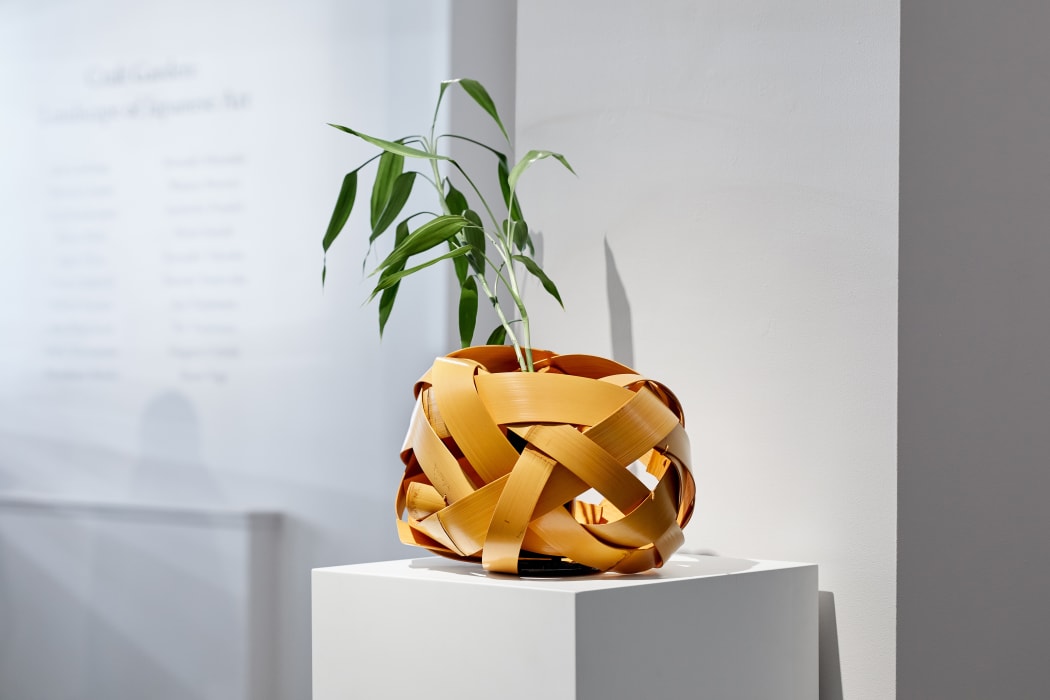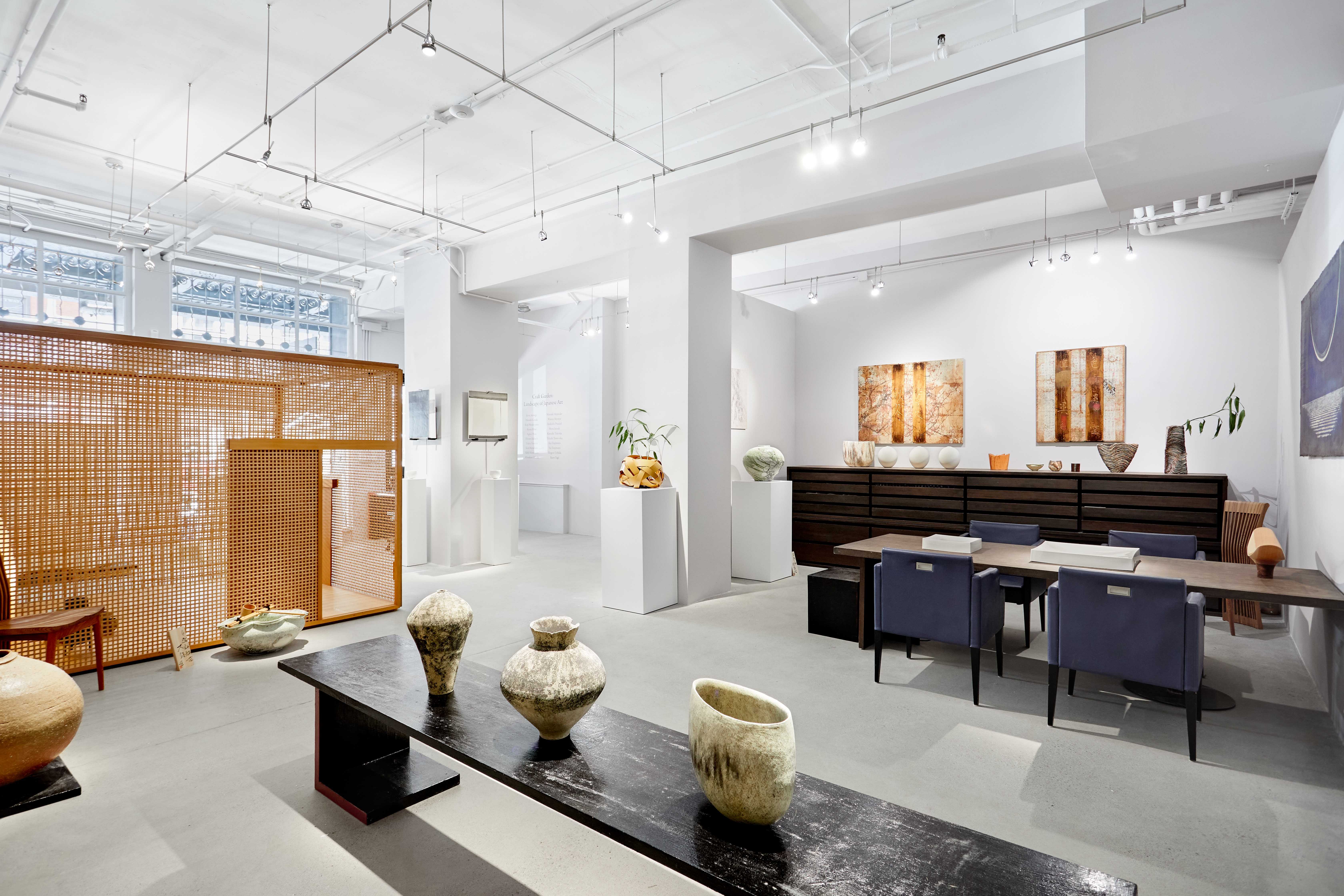
Hafu Matsumoto (b. 1952) is a renowned bamboo artist celebrated for his elegant, organic sculptures meticulously crafted from finely woven bamboo. A master of the traditional Japanese weaving techniques shin, gyō, and sō (formal, semi-formal, and informal styles), Matsumoto is recognized for both his technical mastery and his innovative interpretations of form. He was the final apprentice of Shokansai Iizuka (1919–2004), deemed a Living National Treasure in 1982, and carries forward this esteemed lineage.
In 1988, Matsumoto established his studio in Tateyama, Chiba Prefecture, where he continues to develop his distinctive body of work. Among his numerous accolades, Matsumoto received the Tokyo Governor’s Prize at the 48th East Japan Traditional Craft Exhibition in 2007, and the Japan Kogei Association Chairman’s Prize at the 61st Dento Kogei Ten in 2014. His work is included in major public and private collections, such as the Asian Art Museum in San Francisco.
In recent years, Matsumoto has also gained international recognition through his collaboration with LOEWE, the Spanish luxury fashion house, as part of their efforts to highlight and support exceptional contemporary craft. His inclusion in the LOEWE Foundation Craft Prize exhibition has introduced his work to new global audiences and affirmed his status as a leading figure in contemporary bamboo art.
Ahead of presenting his work in the group exhibition Craft Garden: Landscape of Japanese Art at Ippodo Gallery New York, we asked Hafu Matsumoto five questions.
Question 1:
You have mentioned that the "noshi-take" technique involves bending bamboo vigorously under hot water, thus surrendering to nature beyond deliberate control.
Why do you prefer "noshi-take" over more precisely calculated and designed bamboo baskets?
Matsumoto:
It's true that these works currently compose the majority of my creations. I entered the world of bamboo craft after encountering the exquisite beauty of my master Iizuka Shokansai's decorative boxes and their meticulous weaving. Then, seeing the bundled weaving of his father, Iizuka Rokansai, I discovered the profound depth of this artform. After more than 50 years, I believe I've acquired the two techniques I aimed for and have left behind several others. Now, in my 70s, I'm wanting to face bamboo earnestly once again. I believe bamboo's most distinctive features are its beautiful "nodes." My "noshi-take works" express these nodes and bamboo's flexibility. This is why I create such works.

Hafu Matsumoto, Noshitake Bamboo Basket のし竹花籠, (C29115NP)
Q2:
This group exhibition focuses on Japanese gardens, which embody an approach that doesn't draw clear boundaries between nature and humans (as in Western traditions) but, rather, seeks integration with nature. Do you feel that bamboo works, when used rather than merely viewed as objects, achieve exactly this sense of integration? How do you hope your works exist within people's daily lives?
Matsumoto:
I find the concept of an exhibition themed around Japanese gardens quite interesting. New York is a place where people and cultures from around the world converge - I'm curious about how a "Japanese garden" exhibition will take shape in such a context.
As you may know, it's no exaggeration to say that Japanese culture has evolved alongside tea. Bamboo, which grows abundantly around us, is used in various tea-related items - tea scoops, flower baskets, tea containers, interior and exterior tea room decorations, tea garden fences, and more. When a simple hexagonal weave (kagome-ami) flower basket with a single flower within it is placed in a room, the entire space is transformed.
I believe craft items truly come alive only when used with aesthetic sensibility. Since the Meiji era, many Japanese craftspeople have exhibited their works at various expositions. Bamboo craftspeople with strong convictions have walked the path of crafts like paintings and sculptures, leading to the present day. My master used to say, "Art craft must be beautiful in itself while being conscious of its use." I believe craft is destined to live alongside people. As an artist, my greatest joy comes when people's lives are enriched and their aesthetic sensibilities are nurtured.

Installation for Craft Garden: Landscape of Japanese Art
Q3:
I'm drawn to bamboo's flexibility - how it doesn't assert itself but yields to the environment and weather, which is precisely why it never falls even in strong winds. You mentioned that you were pursuing photography before encountering Iizuka Shokansai's work and chose the path of bamboo. I feel this journey and your attitude of inheriting traditional spirit embodies bamboo itself. In the process of confronting bamboo life and creating works, what does "self" mean to you?
Matsumoto:
This is a very difficult question that I contemplate daily. I have one strong belief, also from my master's words: "Green bamboo is beautiful by itself. If we cut and split it to create something, we must make something more beautiful than the original green bamboo." I feel the spirit and mission of a bamboo craft artist in these words.

Hafu Matsumoto
Q4:
I was deeply moved by your words: "Tradition is something to inherit in spirit, not something to preserve unchanged." Could you share your thoughts on the current state and future of Japanese traditional crafts.
Matsumoto:
As mentioned earlier, I'm currently considering the meaning of using "bamboo," a plant, as a material. I'm returning to the "fundamentals," avoiding complicated theories - therefore, I don't think about tradition or innovation. I simply create with my present feelings - that's my sole commitment.

Hafu Matsumoto, Noshitake Bamboo Basket のし竹花籠, (C29115NP)
Q5:
What are your current and future challenges?
Matsumoto:
I believe that by pursuing the answer to question 4 deeply, various works will emerge. Collaborations with brands like LOEWE are becoming one essence of my work. I think my style will continue to evolve.

Hafu Matsumoto, Noshitake Bamboo Basket のし竹花籠, (C29115NP)
